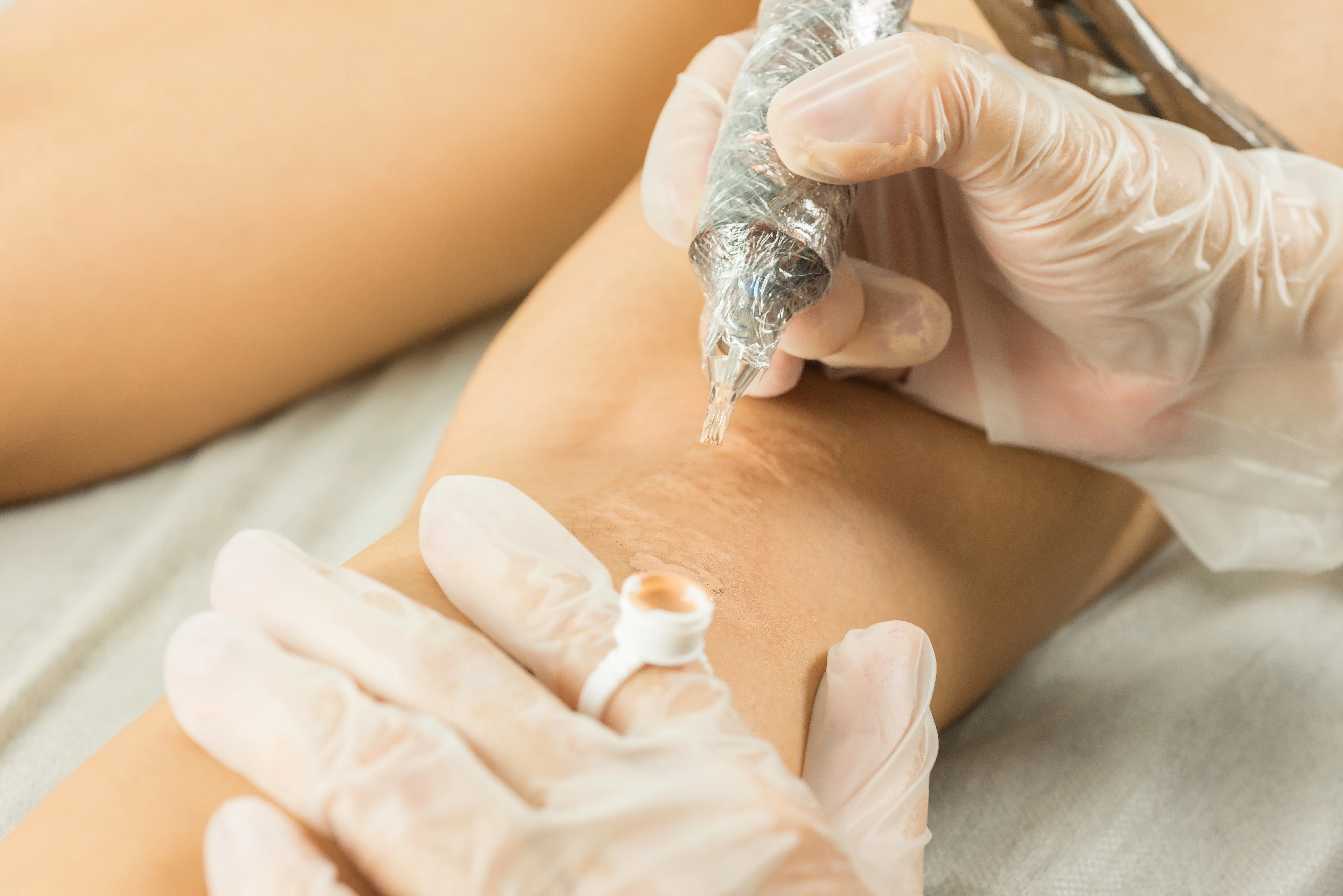What Is Sclerotherapy? How It Works and Who It’s For

Visible leg veins—whether they’re red, blue, or purple—can feel frustrating, especially when they show up in areas like the calves, thighs, or behind the knee. For patients looking to reduce the appearance of spider veins or small varicose veins, one of the most effective and minimally invasive options available is sclerotherapy.
Let’s take a closer look at how this treatment works, who it’s right for, and what to expect during a typical session.
What Is Sclerotherapy?
Sclerotherapy is a nonsurgical treatment used to eliminate unwanted surface veins. It involves injecting a sclerosing solution—typically a mild, FDA-approved irritant—directly into the vein. This solution causes the inner lining of the targeted vein to collapse and stick together. Over time, the body absorbs the treated vein, and blood is naturally rerouted through healthier surrounding vessels.
In our practice, we use this technique for patients who want to improve the appearance of visible veins on the legs that don’t require surgical intervention .
Who Is a Good Candidate?
Sclerotherapy is best for patients who have:
- Spider veins (telangiectasias) or small varicose veins
- Cosmetic concerns related to visible leg veins
- No active clotting disorders or severe chronic venous insufficiency
- No history of allergy to sclerosing agents
It’s especially popular with women who’ve noticed increased vein visibility after pregnancy, hormonal changes, or long periods of standing.
What Happens During the Procedure?
A typical sclerotherapy session takes 15 to 30 minutes and requires no anesthesia. Here’s what to expect:
- Your skin is cleansed, and the problem veins are identified.
- A fine needle is used to inject the sclerosant directly into the affected veins.
- The treated veins may appear to fade or disappear immediately, as seen in our recent patient case where bothersome leg veins vanished during the session .
- You may feel a mild stinging or burning sensation during injection, which typically subsides quickly.
Most patients resume normal activities immediately after treatment, though we recommend avoiding high-impact exercise for a few days.
Results and Follow-Up
- Treated veins typically fade over 3–6 weeks, though some may require multiple sessions for optimal clearance.
- Wearing compression stockings afterward can improve outcomes and reduce swelling.
- Once a vein is treated successfully, it does not return—but new veins can develop over time, especially if you’re genetically prone.
Why Patients Love It
Sclerotherapy is quick, effective, and minimally invasive. There are no incisions, no downtime, and results improve over time. If leg veins are holding you back from feeling confident in your skin, this might be the perfect solution.
Want to find out if you’re a candidate? Schedule a consultation and we’ll evaluate your concerns and treatment options.
—
Dr. Victoria Aimé | Metropolitan Plastic Surgery | Scottsdale, AZ
Our surgical and non-surgical treatment options
Ready to start your transformation?
Whether you’re just beginning to explore your options or have specific goals in mind, we’re here to guide you with expertise and compassion.

Read more articles

Hyaluronic Acid for Dry, Chapped Lips
Dry, chapped lips? Layer a few drops of hyaluronic acid serum under your lip balm to restore hydration and smoothness. This simple step helps your lips stay soft and moisturized—even in dry climates.

Why I Wear UPF Clothing (and You Should Too)
UPF clothing is one of the easiest ways to protect your skin from UV damage—especially while driving or spending time near windows. Dr. Victoria Aimé shares how she uses UPF sleeves, gloves, and hats daily, and why this sun-smart habit is a must for long-term skin health.

Medical Tattooing for Scars: An Effective Option for Natural-Looking Results
Learn how medical tattooing can effectively camouflage scars and hypopigmented areas. Ideal for tummy tuck scars, breast lift scars, or post-reconstruction areolas, this treatment blends pigment naturally for more confident, seamless results.

How to Choose and Use Sunscreen: What SPF Really Means
Not all sunscreens are created equal. Learn what SPF really means, how to apply sunscreen correctly, and which options Dr. Aimé recommends for daily protection.
